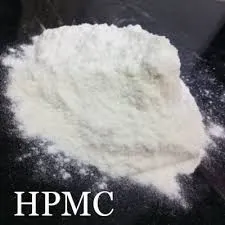
Nov . 27, 2024 13:14 Back to list
Preparation of HPMC Gel for Various Applications in Pharmaceutical and Cosmetic Industries
HPMC Gel Preparation A Comprehensive Guide
Hydroxypropyl methylcellulose (HPMC) is a cellulose ether that has gained popularity in various fields due to its thickening, gelling, and film-forming properties. Its versatility makes it an essential ingredient for preparing gels in pharmaceuticals, cosmetics, and food industries. This article will provide a detailed overview of HPMC gel preparation, discussing the materials, methods, and applications.
Materials
The primary material needed for HPMC gel preparation is hydroxypropyl methylcellulose itself, which is available in different viscosity grades. The viscosity grade determines the gel's consistency, and selecting the appropriate grade is crucial for the desired application. Common grades range from low (about 3,000 mPa·s) to high (up to 100,000 mPa·s).
Other essential materials include
1. Water or Solvent Distilled water is typically used, but organic solvents may be employed depending on the targeted use of the gel. 2. Preservatives In pharmaceutical and cosmetic applications, preservatives like methylparaben or phenoxyethanol may be added to prevent microbial contamination. 3. Active Ingredients Depending on the application, active ingredients such as drugs, vitamins, or botanical extracts can be incorporated into the gel. 4. pH Adjusters To stabilize the gel, pH adjusters like citric acid or sodium hydroxide may be required to achieve the desired pH level.
Preparation Method
Step 1 Dissolving HPMC
To prepare HPMC gel, begin by determining the desired concentration of HPMC. Typical concentrations range from 0.5% to 5% (w/v), depending on the application and texture needed.
1. Heating Water If using high-viscosity HPMC, heat about 70-80% of the total water volume to a temperature between 80°C to 90°C. This approach helps dissolve the HPMC effectively.
2. Adding HPMC Gradually sprinkle the HPMC powder into the heated water while stirring continuously. This will help avoid clumps and ensure even distribution. Stir for approximately 30 minutes until HPMC is fully dissolved.
3. Cooling the Mixture Allow the mixture to cool to room temperature. During this process, the solution will gradually thicken and form a gel-like consistency.
Step 2 Incorporating Other Ingredients
hpmc gel preparation

Once the HPMC is fully dissolved and the gel is at room temperature, integrate other components into the mixture
1. Adding Active Ingredients If using active pharmaceutical ingredients (APIs) or other additives, incorporate them slowly while stirring to ensure uniform distribution throughout the gel.
2. Incorporating Preservatives If preservatives are required, add them at this stage, ensuring they are thoroughly mixed to provide effective antimicrobial protection.
3. pH Adjustment If needed, perform a pH check using a pH meter and adjust accordingly. This step is especially important for pharmaceutical applications, where pH levels can influence drug stability and absorption.
Step 3 Finalizing the Gel
1. Final Mixing Ensure all ingredients are uniformly combined and that the gel texture meets the desired criteria.
2. Storage Transfer the gel into airtight containers to prevent contamination. Store it in a cool, dry place, away from direct sunlight. Proper storage will help maintain the gel's consistency and stability over time.
Applications
HPMC gels have a multitude of applications across various industries
- Pharmaceuticals Used as topical gels for drug delivery, wound dressings, and controlled-release formulations. - Cosmetics Employed in lotions, creams, and hair products to improve texture and viscosity. - Food Industry Acts as a thickening agent in sauces, dressings, and bakery goods.
Conclusion
HPMC gel preparation is a straightforward process that requires attention to detail in ingredient selection and mixing to ensure a stable and functional end product. Its versatility across different applications makes HPMC a valuable asset in numerous industries. By following the appropriate preparation methods, manufacturers can create high-quality gels that meet specific requirements, ultimately enhancing product performance and consumer satisfaction.
-
Premium Cellulose Ether: Effective Liquid Thickener Solutions
NewsAug.29,2025
-
HPMC for Tile Adhesive: Enhanced Bonding & Workability
NewsAug.28,2025
-
tile-bonding-additives-for-stronger-bonds
NewsAug.22,2025
-
construction-grade-rdp-for-wholesale-needs
NewsAug.22,2025
-
trusted-hec-supplier
NewsAug.22,2025
-
HEC Solutions for Industrial Excellence
NewsAug.22,2025







